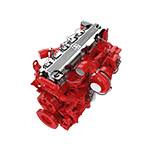Aug . 09, 2024 19:00 Back to list
Understanding the Components and Functionality of a Brake Drum System in Vehicles
Understanding the Parts of a Brake Drum
Brake drums are crucial components in a vehicle's braking system, especially in older cars and trucks that employ drum brakes. While modern vehicles predominantly use disc brakes, understanding the components of brake drums can provide insight into how these systems operate and why they are still used in various applications.
What is a Brake Drum?
A brake drum is a cylindrical component that houses the braking mechanism in drum brake systems. When the driver presses the brake pedal, brake shoes expand against the inside of the drum, creating friction that slows down the vehicle. The simplicity and effectiveness of the drum brake system make it a staple in many vehicles, particularly in rear-wheel applications.
Major Parts of a Brake Drum
1. Brake Drum The brake drum itself is made from cast iron or aluminum and provides the surface against which the brake shoes press to create friction. The interior surface of the drum is finely machined to ensure a smooth contact area, which is essential for efficient braking performance.
2. Brake Shoes These are curved components that press against the inner surface of the brake drum when the brakes are applied. Brake shoes are lined with friction material, which can wear over time. The performance of the brake system heavily depends on the condition of the brake shoes; they should have enough material to ensure effective braking without damaging the drum.
3. Wheel Cylinder Located at the top or bottom of the drum, the wheel cylinder is a hydraulic component that pushes the brake shoes outward against the drum when hydraulic fluid is applied. It contains pistons that move when the brake pedal is pressed, effectively expanding the shoes against the drum.
parts of a brake drum

4. Return Springs These springs are essential in the brake drum assembly. They help to retract the brake shoes away from the drum when the brakes are released, allowing the wheels to spin freely. If the return springs are weak or worn out, the shoes may not fully retract, leading to increased wear and overheating.
5. Adjuster Mechanism The adjuster mechanism is designed to maintain the appropriate distance between the brake shoes and the drum. As the brake shoes wear down over time, the adjuster compensates for this wear by moving the shoes closer to the drum, ensuring consistent braking performance.
6. Backing Plate The backing plate is a metal plate that provides a mounting surface for the brake shoes and the wheel cylinder. It serves as a protective cover for the brake components and helps to keep dirt and debris away from the braking system.
Advantages and Disadvantages of Brake Drums
One of the significant advantages of drum brakes is their cost-effectiveness and simplicity, making them easier to manufacture and maintain. They also provide excellent braking force, especially at low speeds, which is why they are often used in emergency brake systems.
However, there are downsides to drum brakes. They tend to dissipate heat less effectively than disc brakes, which can lead to brake fade during extended use. Additionally, drum brakes are generally heavier than disc brake systems, which may contribute to a slight decrease in fuel efficiency.
Conclusion
Understanding the components of a brake drum and how they work together can deepen our appreciation for vehicle safety and performance. Although drum brakes may be less common in modern vehicles, they still play an essential role in specific applications. Regular maintenance and inspections of brake drums, shoes, and associated components are vital to ensure optimal braking performance and safety on the road.
-
Brake Drum Man - High-Quality Drum Brake Drums & Brake Shoes for Reliable Performance
NewsJun.24,2025
-
High-Quality Brake Drum Kamaz – Durable Drum Brake Drum & Brake Shoe Replacement
NewsJun.10,2025
-
High-Quality Brake Drum Liza for Drum Brake Systems - Superior Durability and Performance
NewsJun.10,2025
-
High-Quality Brake Drum Kamaz – Durable Drum Brake Drum & Brake Shoe Solutions
NewsJun.10,2025
-
Durable Kamaz Brake Drums High-Performance Truck Parts
NewsJun.09,2025
-
Premium Brake Drum Maz Kit with Shoes Enhanced Braking
NewsJun.09,2025
